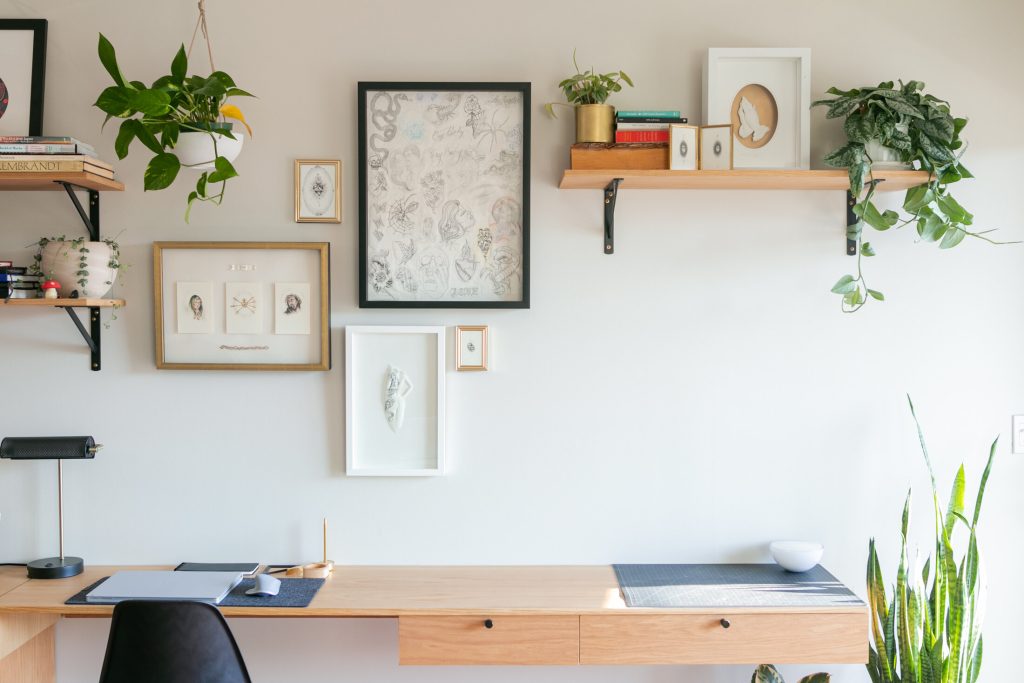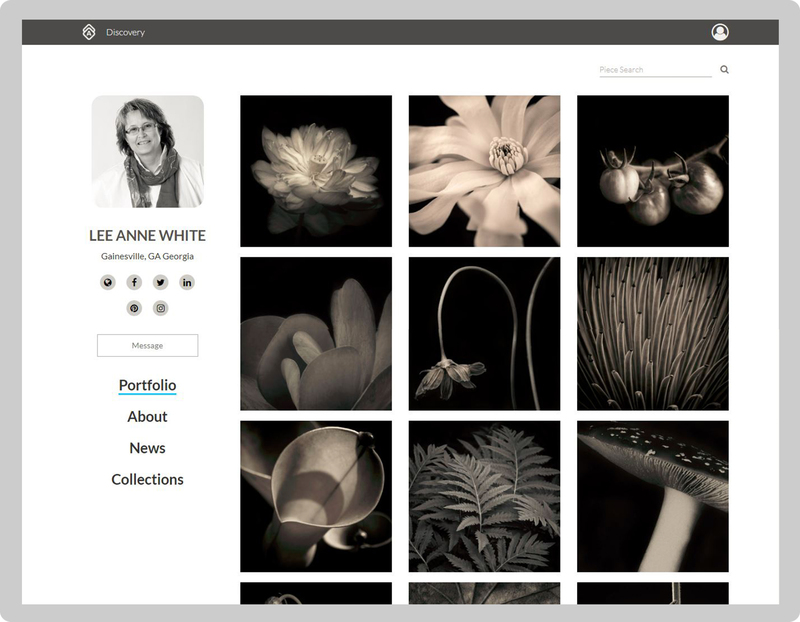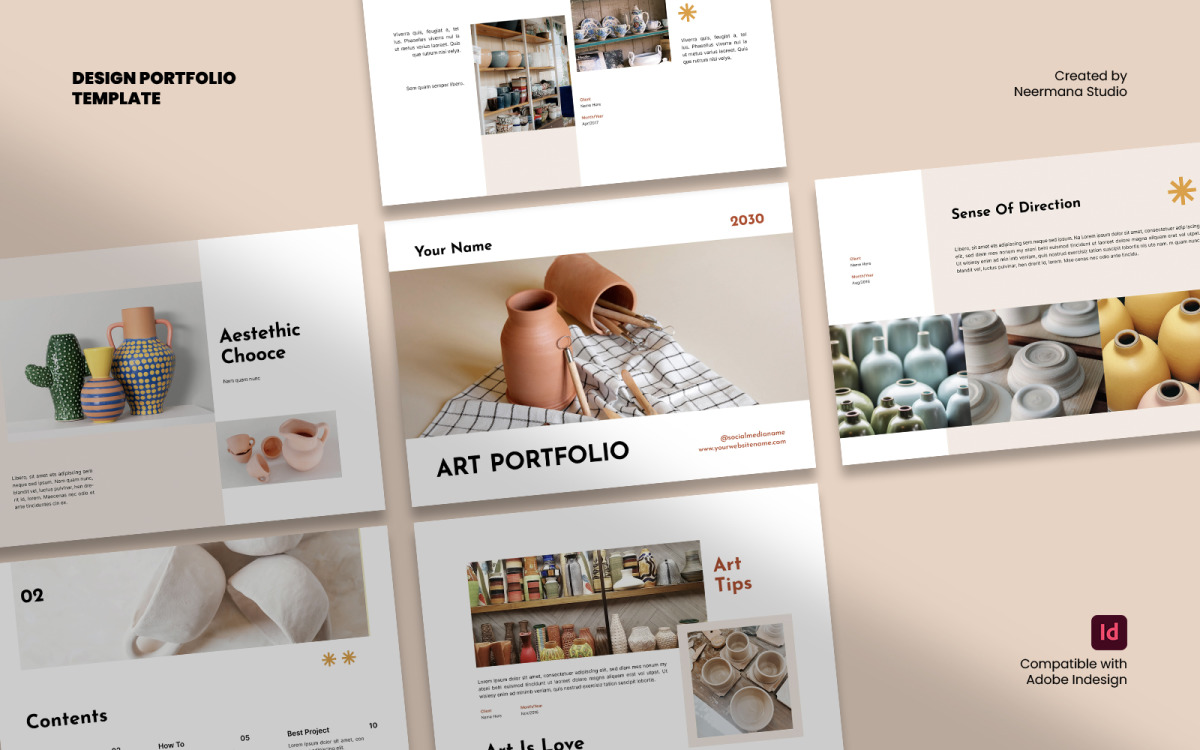Build an Art Portfolio That Connects: A 5-Step Guide for Artists

Portfolios often get framed as some intimidating final boss for artists. Like it’s this sacred document where everything must be polished, flawless, and ready to impress every gallery on Earth.
But let’s flip that idea.
What if your portfolio didn’t have to feel like a stiff job interview? What if it felt more like your favorite sketchbook, carefully curated, full of intention, and unmistakably you?
This guide is here to help you do just that. We’re not just talking about uploading high-res images and calling it a day. We’re diving into how to shape your portfolio as a living, breathing snapshot of who you are as an artist. Whether you’re submitting to an open call, pitching a gallery, or building your online presence, these five steps will help you lead with clarity, voice, and (yes!) joy.
Step 1: Know What You’re Aiming For (So You Know What to Show)
Before you start selecting pieces or designing layouts, zoom out and ask yourself:
- What’s the purpose of this portfolio?
- Who will be viewing it?
- What do I hope happens after they see it?
Treat this like your creative compass. Whether you’re submitting to a themed open call, or updating your website, each ver5 Steps to Showcase Your Best Work in a Portfolio (That Actually Feels Like You)sion of your portfolio needs its own flavor.
Examples:
- For a residency, highlight process-driven work and show how your practice is evolving.
- For a grant, feature outcomes—how your work impacts, documents, or challenges.
- For a gallery, hone in on cohesion and exhibition-ready pieces.
The more you clarify the context, the easier it is to decide what belongs.
Bonus Tip: You can keep different versions of your portfolio saved in a Google Drive folder. Like one for print submissions and another with embedded links for online showcases. Having different versions ready-to-go saves time and stress.
Additional Insight: Sometimes your goal isn’t professional at all. Maybe you’re building a personal archive, or you’re about to launch your first website. Even if no one else sees your portfolio yet, deciding why you’re building it will help you stay focused and intentional.
Step 2: Select Less, But Make It Count
Here’s a creative truth: editing your work is an art form in itself.
Instead of packing your portfolio with every project you’ve ever completed, pause and think like a curator. You’re not just showcasing your range, you’re telling a story.
Ask yourself:
- What are the 6–10 works that feel the most me?
- Which ones align best with the opportunity I’m applying for?
- Do these pieces flow together or feel scattered?
You don’t need to prove your entire creative history. You need to offer a glimpse of your world that invites the viewer in and makes them want to see more.
A strong portfolio feels like a curated playlist, not a random shuffle.
Try This: Create a “longlist” of works first. Then step away for a day or two before returning with fresh eyes to trim it down. Sometimes the best edit decisions happen with space.
Real-World Example: Imagine you’re applying to a nature-themed art call. You’ve painted abstract works, portraits, and botanical illustrations. It’s tempting to include everything but maybe your best bet is to pick those four botanical pieces and group them in a way that tells a cohesive, compelling story.
Step 3: Present Your Work Like It Matters (Because It Does)
Your art deserves to be seen in the best possible light, literally and metaphorically.
That means clean, well-lit images. Thoughtful layouts. Consistent labeling.
Here’s what to keep in mind:
- Use high-resolution images with true-to-life colors
- Crop out messy backgrounds or studio clutter (unless it’s intentional)
- Label clearly: title, year, medium, dimensions
- Group similar works or series together to show cohesion
And if you’re submitting digitally, make sure your portfolio is easy to navigate. PDF? Keep it organized and under a reasonable file size. Online folder? Name everything clearly. Website? Check the links twice.

Good presentation doesn’t scream for attention, it clears the path so the work can speak.
Example: Imagine a reviewer clicking through your PDF. Do they instantly understand what they’re looking at? Can they move from one piece to the next without confusion? If not, go back and refine the flow.
Hot Tip: Avoid over-designing. Let your work take center stage. Simple white or black backgrounds often let the colors and textures of your work stand out better than complex layouts.
Extra Consideration: If your portfolio includes 3D work, sound pieces, or video art, add accessible links or QR codes to high-quality documentation. Always test that your links work across devices.
Step 4: Add Just Enough Context to Spark Curiosity
Think of your portfolio text, bios, captions, artist statements, as a conversation starter.
You’re not writing an academic thesis. You’re offering a window into your process and your why. Just enough to help your viewer engage, without over-explaining the magic.
For each piece or series, consider including:
- What inspired this work?
- What themes or questions does it explore?
- What materials or techniques were used?
Keep it warm, clear, and honest. Avoid jargon unless it’s necessary. You’re not trying to sound impressive, you’re trying to make a connection.
Mini exercise: Read your text out loud. If it sounds like how you actually talk, you’re on the right track.
Try This: Add one unexpected insight. Like how a memory inspired your color palette or how an accidental spill turned into a meaningful motif. These small stories can stick with reviewers longer than sweeping summaries.
Helpful Hint: Include a short paragraph or audio snippet (if your platform allows) where you speak casually about your current artistic obsession or process. This adds a layer of voice and intimacy that’s hard to ignore.
Step 5: Let You Shine Through
Beyond the work itself, your portfolio is a chance to reveal the artist behind the canvas. This is where your personality, voice, and vision come forward.
This doesn’t mean you have to overshare. But a thoughtful artist bio, a short statement of current focus, or even a playful section title can make your portfolio memorable.
Try something like:
“I’m a mixed-media artist exploring how memory, texture, and movement live in the same visual space. My current work investigates how layering familiar materials can create new emotional associations.”
Want a fun twist? Use creative section headers in your portfolio like “From the Archives,” “Studio Stories,” or “What I’m Dreaming About Now.” A bit of personality makes your portfolio stand out without sacrificing professionalism.
Another Idea: Record a 1-minute welcome video introducing yourself and linking it at the beginning of your digital portfolio. It’s a quick way to create a connection and show your enthusiasm.
Bonus Tip: Keep Your Portfolio Alive
Your portfolio isn’t a one-time project. It grows with you. It shifts as your work evolves, your ideas deepen, and your goals change.
Set a reminder to check in with it every few months. Ask:
- Does this still reflect who I am as an artist?
- Is there anything I’ve outgrown?
- Is there something new I’m excited to share?
Treat it like a garden. Prune. Refresh. Add something bold. Let it breathe.

Quick Win: Keep a “portfolio candidate” folder where you drop in new works that might belong in a future update. That way, you’re never starting from scratch when you need to revise it.
Smart Habit: Document your work as you create it. Photos, notes, sketches, voice memos. This will make portfolio building feel less like a daunting recap and more like storytelling in real-time
Rethinking the Wrap-Up: Give Your Portfolio Room to Breathe
Instead of treating your portfolio like a final product or a checklist, treat it like a living, flexible expression of where you’re at right now. You’re not trying to package yourself for approval. You’re offering a window into your work, your growth, and your vision.
So breathe some life into it. Keep it honest. Make it human.
Imagine someone flips through your portfolio and walks away thinking, “I want to see more.” That’s the goal. Not perfection, resonance.
And remember: Your best work doesn’t need to be loud to be powerful. Sometimes it just needs space, intention, and the right framing to shine.
Give it that and trust that the right eyes will find their way to it.
Now go ahead. Share boldly. Refine gently. And let your portfolio be the conversation starter you actually enjoy returning to.
